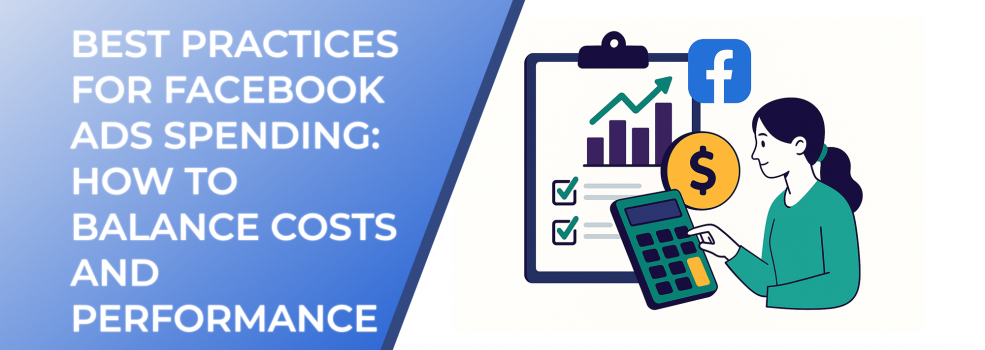Facebook advertising continues to be one of the most effective ways to reach niche audiences, but many businesses still struggle to control ad costs while maintaining strong performance. With CPMs rising year-over-year and algorithmic changes affecting delivery, balancing budget and outcomes is now more complex than ever.
This article outlines tested best practices to optimize your Facebook ads spending while improving ROI — especially for businesses using tools like LeadEnforce to sharpen audience targeting.
1. Understand the True Cost of Facebook Ads
Before optimizing spend, you must understand where your budget is going. According to Wordstream, the average CPC on Facebook is $1.72, but this number varies drastically based on industry, targeting method, and ad placement.
A recent study found:
-
Average CPM across Facebook was $14.40 in Q1 2025.
-
The average click-through rate (CTR) is 0.90%, but top-performing campaigns exceed 2.5%.
To go deeper, explore our guide on How to Analyze Facebook Ad Performance Beyond CTR and CPC.
2. Use Advantage+ Budget Strategies Wisely
Facebook’s Advantage Campaign Budget (ACB) automates spend distribution across ad sets. While it's useful for scaling, it doesn't guarantee efficiency unless you feed it quality audience signals.
To ensure scalability with control:
-
Start small, then scale gradually based on performance signals.
-
Combine ACB with performance-driven objectives, as explained in How to Optimize Advantage Campaign Budget for Scalable Facebook Ads.
-
Always monitor frequency and conversion quality.
Keywords used: advantage campaign budget, campaign budget optimization
3. Match Spend to Funnel Stage
Top-of-funnel campaigns often require broader targeting and creative testing, demanding a larger share of your initial budget. However, for bottom-of-funnel ads (like retargeting), smaller budgets with narrow targeting can outperform expensive cold reach campaigns.
Recommended Facebook Ad Budget Distribution Across the Funnel: TOF, MOF, and BOF.
A good ratio is:
-
60% to TOF (brand awareness, video views)
-
25% to MOF (traffic, engagement)
-
15% to BOF (retargeting, conversions)
Learn how to structure your funnel efficiently in our article: Facebook Ads Funnel Strategy: From Audience Identification to Conversion.
4. Optimize for the Learning Phase
If your ad sets can’t exit the learning phase quickly, you’re wasting spend. Facebook requires about 50 conversions per week to stabilize delivery.
How to Exit the Facebook Ad Learning Phase Faster: Key Metrics and Optimization Tips.
Tips:
-
Use simplified structures.
-
Set realistic budgets that allow enough volume.
-
Focus on one optimization goal per ad set.
Dive deeper into learning phase tactics here: How to Optimize Facebook Campaigns for Faster Learning Phase Exit.
5. Don’t Scale Until You Stabilize ROAS
Many advertisers increase budgets too early. Only scale campaigns when:
-
ROAS is consistent across 3–5 days.
-
Frequency is below 3.
-
You’ve tested enough creatives and audiences.
We explore how to scale without waste in: Advanced Tactics to Improve Facebook ROAS Without Raising Spend.
6. Use Budget Optimization Rules
Automated rules reduce emotional decision-making and optimize spending in real time. Set rules for:
-
Pausing underperforming ads
-
Increasing budget on high-ROAS campaigns
-
Reducing spend during low-engagement hours
Learn how to build these rules in: Boost Facebook Ad Performance with Budget Optimization Rules.
7. Choose Daily vs. Lifetime Budgets Strategically
The choice between daily and lifetime budgets can influence ad delivery. Daily budgets offer predictability and control, while lifetime budgets offer flexibility and pacing over time.
Learn when to use each in this guide: Daily vs Lifetime Budgets: What's Better for Facebook Campaign Performance?.
8. Watch Out for Ad Fatigue
As your audience sees the same ad repeatedly, performance drops and costs rise. A CTR drop of more than 30% week-over-week is a key sign.
Solutions:
-
Rotate creatives weekly.
-
Implement frequency capping.
-
Use engagement audiences to exclude past viewers.
More on fatigue prevention: The Real Cost of Ad Fatigue and How to Prevent It
Final Thoughts
Balancing costs and performance in Facebook advertising isn't about spending more — it’s about spending smart. By adopting structured optimization, leveraging automation, and following the funnel, brands can achieve scalable and sustainable results.
For further insights into Facebook ad strategy, check out our post on How to Improve Campaign Performance Without Increasing Budget.

